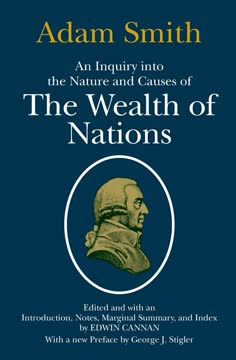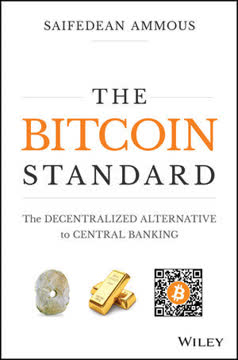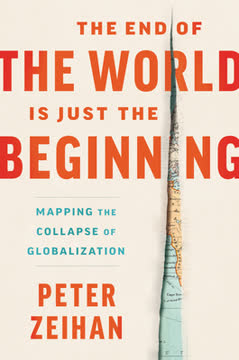Key Takeaways
1. Pandemic Response, Not Virus, Caused Depression
This book is about a virus that caused a global depression. More precisely, it’s about how our reaction to a virus caused a global depression.
Human choices matter. The author argues that while the virus caused disease, it was the policy choices made in response to the pandemic that triggered the economic collapse. The virus itself didn't directly cause the depression; it was the human reaction to it. This highlights the importance of considering the economic consequences of public health measures.
Muddled and contradictory. The choices made were often informed by science and economics, but these fields were themselves in disagreement, leading to muddled and contradictory policies. The suddenness and lethality of the disease created extreme duress, and while experts acted in good faith, it's not clear that any other team would have done better under the circumstances.
Unsung heroes. Despite the policy failures, there were many heroes, including nurses, doctors, hospital staff, sanitation workers, and charitable groups. These individuals worked tirelessly to care for the sick and maintain essential services, often at great personal risk. The author emphasizes that their sacrifices should not blind us to the economic misery caused by the policy response.
2. Lockdowns: Unnecessary, Ineffective, and Costly
In the fullness of time, the 2020 lockdown of the U.S. economy will be viewed as the greatest policy blunder ever.
Lockdowns don't work. The author contends that lockdowns were unnecessary and ineffective, based on flawed science and a failure to consider the costs. They were implemented inconsistently, with varying definitions of "essential" businesses and a patchwork of state-by-state orders. The virus spread regardless of the lockdowns, and people simply found ways around them.
Flattening the curve. The primary goal of lockdowns was to "flatten the curve" of infections, not to reduce total infections or fatalities. This meant slowing the spread to avoid overwhelming hospitals, but it did not reduce the overall number of cases. The author argues that this was not clearly explained to the public, and that other solutions were available.
Unconsidered costs. The economic costs of the lockdown were enormous, including trillions of dollars in lost wealth and output, as well as tens of thousands of deaths from drugs, alcohol, suicide, and deferred medical care. The author argues that these costs were not adequately considered by policy makers, who focused solely on the virus and ignored the broader consequences.
3. The New Great Depression: A Unique Economic Collapse
The 60 million U.S. job losses in the New Great Depression have played out in just over four months, and more losses are coming.
Not just a recession. The author emphasizes that the current economic crisis is not a typical recession but a depression, characterized by depressed growth relative to trend growth, not just continuous declining output. It's a psychological as much as a numeric phenomenon, with profound behavioral changes that will persist for years.
Unprecedented job losses. The speed and scale of job losses in the New Great Depression are unprecedented, with 60 million jobs lost in just four months. This is far worse than the job losses during the first Great Depression, which played out over several years. Many of these jobs will never return, and the recovery will be long and hard.
Divorced from reality. The stock market's recovery is divorced from the real economy, driven by robots, passive investing, and Federal Reserve money printing. The author argues that the stock market is not a reliable indicator of economic health and that the real economy is suffering deeply.
4. Monetary Policy: Printing Money Isn't Stimulus
Money printing and big spending may help keep the lights on in the economy, but those policies should not be confused with “stimulus.”
Fed's failures. The Federal Reserve has a history of policy failures, including its inability to normalize interest rates or its balance sheet after the 2008 financial crisis. The author argues that the Fed's current money printing is not stimulus but merely a way to keep markets liquid and banks open.
Velocity is key. The author explains that the Fed's policies are ineffective because they ignore the importance of velocity, the turnover of money. When people save rather than spend, velocity declines, and money printing becomes impotent. The Fed cannot control velocity, which is a behavioral phenomenon.
Monetarism's flaw. The author critiques monetarism, the theory that changes in money supply are the most important cause of changes in GDP. He argues that monetarism fails because it assumes velocity is constant, which is not the case. The Fed's money printing is not creating growth because velocity is declining.
5. Fiscal Policy: Deficit Spending Isn't a Cure
The United States is past the point where stimulus is even possible, except for one little-known policy.
Keynesian limits. The author argues that while deficit spending can be effective in certain conditions, it is not a cure for the current depression. The Keynesian multiplier, which suggests that each dollar of government spending produces more than one dollar of growth, only works when debt is low and the economy is in a true liquidity trap.
Reinhart-Rogoff threshold. The author cites the research of Carmen Reinhart and Kenneth Rogoff, which shows that when debt-to-GDP ratios exceed 90%, the Keynesian multiplier falls below one. At this point, more debt does not produce commensurate growth, and the economy enters a phase of slow growth and eventual default.
Addiction to debt. The author argues that the U.S. is addicted to debt, and that the current level of deficit spending is unsustainable. The government's spending is not creating growth, and the debt burden is becoming increasingly difficult to manage.
6. Deflation: The Real Economic Threat
The real source of money status is not state power; it’s confidence.
Deflation's dangers. The author argues that deflation, not inflation, is the real economic threat. Deflation increases the real value of debt, making it harder to repay, and it also reduces the nominal value of GDP, increasing the debt-to-GDP ratio.
Fed's fear. The Federal Reserve fears deflation because it makes government debt harder to manage and threatens the banking system. The Fed prefers inflation because it erases debt, reduces the debt-to-GDP ratio, and props up banks.
Liquidity trap. The author explains that the U.S. economy is in a liquidity trap, where people prefer to save rather than spend, leading to a deflationary spiral. The Fed's money printing is ineffective in this environment because it cannot change people's behavior.
7. Civilization's Thin Veneer: Social Disorder Rises
Society cannot function if it is every man for himself. By definition, civilization cannot survive that.
Mental health toll. The author highlights the mental health consequences of the pandemic and lockdown, including cognitive impairment, depression, anxiety, and increased substance abuse. These issues are not limited to those infected by the virus but affect the entire population.
Erosion of community. The lockdown has eroded social bonds and created a sense of isolation and despair. The author argues that this has contributed to the rise of social disorder, including protests, riots, and violence.
Breakdown of order. The author argues that the pandemic and lockdown have revealed the fragility of social order. He cites examples of defiance, protests, and police overreach, all of which are symptoms of a society under stress.
8. Investing in Chaos: A New Approach
The perception gap creates huge opportunities for gains by investors.
Markets are often wrong. The author argues that markets are not efficient and are often wrong in their forecasts. This creates opportunities for investors who can identify the gap between perception and reality.
Key to profits. The key to beating the market is to get the forecast right, understand the policy reaction function, and trade ahead of both. This requires a combination of rigorous modeling, market timing, and a willingness to be nimble.
Optimal portfolio. The author recommends a portfolio allocation that is robust to deflation, inflation, and social disorder, including cash, gold, residential real estate, Treasury notes, and a small allocation to equities in specific sectors. He emphasizes the importance of diversification across asset classes, not just within them.
Last updated:
FAQ
What is "The New Great Depression" by James Rickards about?
- Pandemic-Induced Economic Crisis: The book explores how the global response to the COVID-19 pandemic, rather than the virus itself, triggered a worldwide economic depression.
- Analysis of Policy Choices: Rickards examines the policy decisions—especially lockdowns—that led to economic collapse, arguing they were unnecessary, ineffective, and based on flawed science and economics.
- Historical and Economic Context: The book draws parallels between the current crisis and past depressions, such as the Great Depression of 1929 and the Long Depression, to frame the scale and nature of the current downturn.
- Investment and Recovery Strategies: It provides practical advice for investors and policymakers on how to navigate and potentially prosper in the post-pandemic world.
Why should I read "The New Great Depression" by James Rickards?
- Critical Perspective on Lockdowns: The book offers a contrarian view on the effectiveness and consequences of pandemic lockdowns, challenging mainstream narratives.
- Comprehensive Economic Analysis: Rickards combines history, economics, behavioral psychology, and complexity theory to provide a multidimensional understanding of the crisis.
- Actionable Investment Advice: Readers receive concrete strategies for preserving and growing wealth during prolonged economic turmoil.
- Insight into Policy Failures: The book helps readers understand the interplay between public health decisions and economic outcomes, equipping them to critically assess future crises.
What are the key takeaways from "The New Great Depression" by James Rickards?
- Lockdowns Caused the Depression: The economic depression was primarily a result of policy responses, not the virus itself.
- Long-Term Economic Damage: The depression will have lasting effects, with slow recovery, persistent unemployment, and significant behavioral changes in society.
- Deflation and Debt Risks: The U.S. and global economies face deflationary pressures and unsustainable debt, which traditional monetary and fiscal policies cannot easily resolve.
- Investment Diversification is Crucial: Rickards recommends a diversified portfolio including cash, gold, real estate, Treasury notes, and select equities to weather ongoing volatility.
How does James Rickards define a "depression" in "The New Great Depression"?
- Not Just Prolonged Recession: A depression is not simply a long recession; it is a period of sub-normal economic activity without a clear tendency toward recovery or collapse.
- Depressed Growth Relative to Trend: The key feature is growth that remains below potential for an extended period, even if there are periods of improvement.
- Psychological and Behavioral Impact: Depressions are marked by profound changes in behavior, such as increased saving and reduced spending, which further slow recovery.
- Historical Examples: Rickards references the Great Depression (1929–40) and the Long Depression (1873–97) to illustrate these dynamics.
What is James Rickards' critique of the COVID-19 lockdowns in "The New Great Depression"?
- Unnecessary and Ineffective: Rickards argues that lockdowns did not significantly reduce total infections or deaths and were not justified by the available science.
- Economic and Social Costs Ignored: The lockdowns caused trillions in lost wealth, increased deaths from despair, and widespread social and mental health problems.
- Flawed Policy Origins: The lockdown strategy was based on outdated and untested models, not on sound epidemiological or economic reasoning.
- Alternatives Overlooked: Voluntary measures, targeted quarantines, and better risk communication could have mitigated the crisis without such severe economic damage.
How does "The New Great Depression" by James Rickards compare the current crisis to past economic downturns?
- Worse Than 2008 or 1929: Rickards contends that the speed and scale of job losses and output decline in 2020 surpass those of the 2008 financial crisis and even the early years of the Great Depression.
- Unique Convergence of Crises: Unlike previous downturns, the current crisis combines a pandemic, economic depression, and social unrest simultaneously.
- Historical Patterns of Recovery: The book uses past depressions to show that recoveries are often slow, uneven, and marked by persistent unemployment and behavioral shifts.
- Lessons from History: Rickards emphasizes the importance of learning from past policy mistakes and successes, such as FDR’s use of gold revaluation to break deflation.
What investment strategies does James Rickards recommend in "The New Great Depression"?
- Diversified Portfolio: Rickards suggests allocating assets across cash (30%), gold (10%), residential real estate (20%), Treasury notes (20%), equities (10%), and alternatives (10%).
- Emphasis on Deflation Hedges: Cash and Treasury notes are highlighted as strong performers in a deflationary environment.
- Gold as an Inflation Hedge: Gold is recommended for its potential to protect against currency debasement and as a store of value during crises.
- Selective Equity Exposure: Focus on sectors like natural resources, mining, energy, agriculture, and defense, which are more resilient in downturns.
What is Modern Monetary Theory (MMT) and how does "The New Great Depression" critique it?
- MMT Explained: Modern Monetary Theory posits that governments can create and spend unlimited money as long as they control their currency, with inflation as the only real constraint.
- Rickards’ Critique: The book argues that MMT ignores the psychological limits of confidence and velocity in money, which are crucial for economic stability.
- Inflation and Deflation Risks: Rickards warns that excessive reliance on MMT could first lead to persistent deflation (due to lack of confidence and spending) and later to runaway inflation if confidence collapses.
- Policy Implications: He sees MMT as providing intellectual cover for unsustainable deficit spending, which ultimately fails to stimulate real growth.
How does "The New Great Depression" by James Rickards address the psychological and social impacts of the pandemic and depression?
- Mental Health Crisis: The book documents rising rates of depression, anxiety, substance abuse, and suicide linked to both the virus and the lockdowns.
- Social Disorder: Rickards connects the economic and psychological stress to increased social unrest, protests, and breakdowns in civil order.
- Historical Parallels: He draws comparisons to the aftermath of the Spanish flu, noting long-lasting cognitive and behavioral effects on society.
- Civilization’s Thin Veneer: The book warns that social cohesion is fragile and can quickly erode under sustained economic and psychological pressure.
What are the most important concepts and definitions introduced in "The New Great Depression" by James Rickards?
- Depression vs. Recession: A depression is a prolonged period of sub-normal growth and behavioral change, not just a long recession.
- Velocity of Money: The rate at which money circulates in the economy, which Rickards argues is crucial for growth and is currently collapsing.
- Liquidity Trap: A situation where monetary policy becomes ineffective because people hoard cash rather than spend or invest.
- Deflationary Spiral: A self-reinforcing cycle of falling prices, increased savings, and reduced spending, which deepens economic stagnation.
What are the best quotes from "The New Great Depression" by James Rickards and what do they mean?
- "We cannot blame the virus for the depression; we can only blame ourselves for our response to the virus."
- Emphasizes that policy choices, not the virus itself, caused the economic collapse.
- "Depressions are as much psychological as numeric."
- Highlights the importance of behavioral changes and confidence in shaping economic outcomes.
- "The lockdown was unnecessary and ineffective. It was the ultimate failure of elite expertise."
- Critiques the reliance on flawed models and expert opinion in justifying lockdowns.
- "Civilization is barely skin deep."
- Warns of how quickly social order can break down under stress.
What is James Rickards’ proposed solution to the economic crisis in "The New Great Depression"?
- Dollar Devaluation Against Gold: Rickards advocates raising the dollar price of gold to create controlled inflation, reduce the real debt burden, and break the deflationary cycle.
- Historical Precedent: He cites FDR’s successful use of gold revaluation in 1933 to end deflation and stimulate recovery.
- Skepticism of Conventional Policy: Rickards argues that neither monetary nor fiscal policy, as currently practiced, can resolve the crisis due to high debt and low velocity.
- Personal Action: Even if policymakers do not adopt this solution, individuals can protect themselves by owning gold and diversifying their assets.
Review Summary
The New Great Depression receives mixed reviews. Critics praise its economic analysis and historical context but criticize its rushed publication and lack of depth. Some find Rickards' contrarian views insightful, while others see them as biased and unsupported. The book's coverage of pandemic origins and lockdown impacts is controversial. Readers appreciate Rickards' investment advice and predictions, though some find them simplistic. Overall, opinions vary widely on the book's value, with some considering it essential reading and others dismissing it as unsubstantiated conjecture.
Similar Books










Download PDF
Download EPUB
.epub digital book format is ideal for reading ebooks on phones, tablets, and e-readers.








